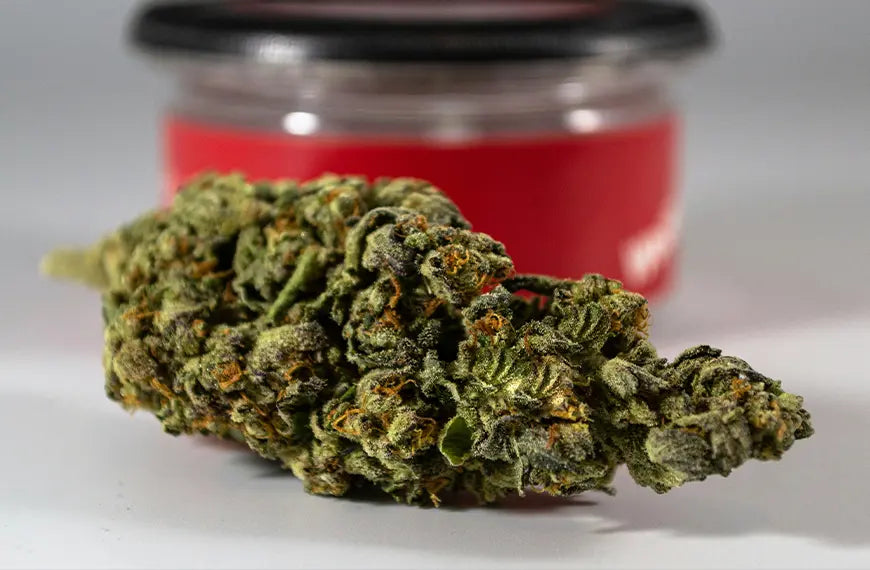How Does CBD Work with the Endocannabinoid System?

Cannabidiol (CBD) has become widely known for its potential therapeutic benefits, ranging from reducing anxiety and stress to promoting better sleep and pain relief. However, many people are still unclear about how CBD works in the body and why it has such diverse effects. The key to understanding CBD’s action lies in the Endocannabinoid System (ECS), a complex network of receptors and molecules in the body that helps maintain balance, or homeostasis, across various physiological processes. In this article, we will explore how CBD interacts with the ECS and its potential to promote wellness.
What is the Endocannabinoid System (ECS)?
The Endocannabinoid System (ECS) is a biological system that plays a crucial role in regulating several important bodily functions, such as mood, appetite, pain sensation, immune function, and sleep. Discovered in the early 1990s by researchers studying the effects of THC, the main psychoactive compound in cannabis, the ECS consists of three main components:
- Endocannabinoids: These are naturally occurring molecules produced by the body that are similar to cannabinoids found in the cannabis plant. The two most well-known endocannabinoids are anandamide and 2-AG.
- Receptors: There are two primary types of receptors in the ECS:
- CB1 receptors are mostly found in the brain and central nervous system.
- CB2 receptors are primarily located in the peripheral organs and immune cells.
- Enzymes: These enzymes break down endocannabinoids once they’ve served their purpose. The two main enzymes are FAAH (Fatty Acid Amide Hydrolase) and MAGL (Monoacylglycerol Lipase).
The ECS works to keep various physiological functions within a certain range, maintaining homeostasis. When something goes wrong or out of balance (e.g., inflammation, pain, or anxiety), the ECS helps to restore equilibrium. This makes the ECS a vital part of overall health and wellness.
How Does CBD Interact with the ECS?
Unlike THC, which directly binds to the CB1 and CB2 receptors to produce its psychoactive effects, CBD interacts with the ECS in a more indirect and complex way. Research suggests that CBD does not bind directly to the CB1 or CB2 receptors in the same manner as THC but instead affects the ECS by influencing the activity of various enzymes and receptors.
Here are the primary ways CBD interacts with the ECS:
- Inhibition of FAAH Enzyme: One of the key mechanisms by which CBD works is its ability to inhibit the FAAH enzyme, which breaks down anandamide (often referred to as the “bliss molecule”). By preventing the breakdown of anandamide, CBD helps to increase its levels in the body, potentially promoting feelings of well-being, happiness, and relaxation.
- Indirect Modulation of CB Receptors: While CBD does not bind directly to CB1 or CB2 receptors, it can influence how other cannabinoids interact with these receptors. Studies show that CBD can act as a negative allosteric modulator of the CB1 receptor, meaning it can reduce the intensity of THC’s psychoactive effects. Additionally, CBD has been shown to enhance the activation of CB2 receptors, which are linked to immune function and inflammation.
- Interaction with Other Receptors: CBD also interacts with other non-cannabinoid receptors that play a role in regulating bodily functions. For instance, CBD binds to the 5-HT1A receptor, which is involved in the regulation of serotonin (a neurotransmitter that helps regulate mood, anxiety, and sleep). This is one reason why CBD is believed to have anti-anxiety and mood-lifting effects.
- Modulation of TRPV1 Receptors: CBD also influences the TRPV1 receptors, which are responsible for regulating pain, inflammation, and body temperature. By modulating TRPV1 receptors, CBD may help to reduce pain and inflammation, making it a useful compound for those suffering from chronic pain conditions.
What Are the Potential Benefits of CBD Through the ECS?
The interaction between CBD and the ECS has been linked to several therapeutic effects. While more research is needed to fully understand the scope of CBD’s impact on the ECS, preliminary studies suggest that CBD may help address a variety of conditions:
- Pain Relief: CBD may interact with the ECS to modulate pain signals. Its influence on CB2 receptors and TRPV1 receptors may help reduce both chronic pain and inflammation. This makes CBD a promising option for conditions such as arthritis, muscle pain, and neuropathic pain.
- Anxiety and Stress Reduction: CBD’s effects on the serotonin receptors, particularly 5-HT1A, may help reduce anxiety and stress. Some studies suggest that CBD may promote a sense of calm, making it an effective option for those with generalized anxiety disorder (GAD), social anxiety, or even post-traumatic stress disorder (PTSD).
- Improved Sleep: By influencing the ECS, CBD may help regulate sleep patterns. Its ability to promote relaxation and reduce anxiety can make it easier to fall and stay asleep. Research indicates that CBD may be useful for those suffering from insomnia or disrupted sleep due to pain or anxiety.
- Neuroprotection and Cognitive Health: There is growing interest in the neuroprotective properties of CBD, particularly its potential to prevent neurodegenerative diseases like Alzheimer’s and Parkinson’s. CBD may protect brain cells from damage caused by oxidative stress and inflammation, which are common in these diseases.
- Mood Regulation: As CBD influences serotonin and anandamide levels, it may play a role in improving overall mood. Some studies suggest that CBD can help treat symptoms of depression, particularly when it’s combined with other therapies.
How Can CBD Be Used to Support the ECS?
To support the ECS with CBD, individuals typically use CBD products like oils, tinctures, capsules, edibles, and topicals. The best method of use depends on the individual’s needs, preferences, and the specific condition being treated.
- CBD Oils and Tinctures: These are fast-acting and provide a controlled dose, making them ideal for people looking to support the ECS for mood, anxiety, or pain.
- CBD Capsules and Edibles: These are convenient but take longer to take effect as they must pass through the digestive system. However, they provide long-lasting relief.
- CBD Topicals: Applied directly to the skin, these are ideal for targeting localized pain or inflammation.
The optimal dosage of CBD varies from person to person, and it’s recommended to start with a low dose and gradually increase it to find the right level of relief.
Conclusion
The Endocannabinoid System plays a crucial role in maintaining balance and supporting various bodily functions. By interacting with this system, CBD can help promote wellness in a natural and non-psychoactive way. While more research is needed to fully understand the depth of CBD’s effects, existing studies suggest that CBD may have a positive impact on pain management, anxiety, sleep, and overall mood.
Understanding how CBD works with the ECS provides a deeper insight into its potential therapeutic benefits. If you’re considering CBD as part of your wellness routine, it’s always best to consult with a healthcare professional to ensure that it’s the right fit for your individual needs.



